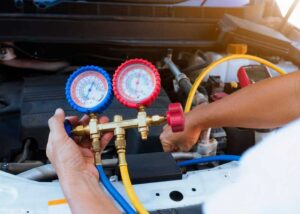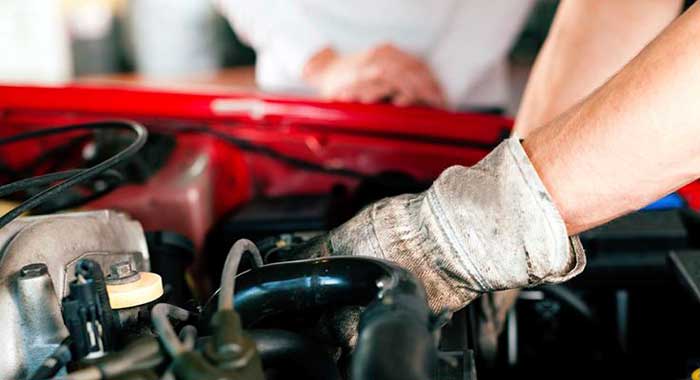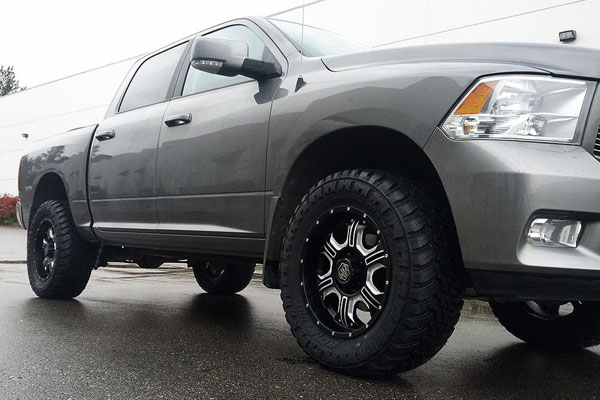 When a car’s air conditioner breaks or stops working, it usually has to be fixed. It is necessary to release the Freon in the air conditioner while doing such repairs.
When a car’s air conditioner breaks or stops working, it usually has to be fixed. It is necessary to release the Freon in the air conditioner while doing such repairs.
The air conditioning system in your car, like the air conditioning in your home and workplace, uses Freon to cool the air. Freon should not be exposed to the atmosphere. Therefore, in this article, you will discover how to safely release Freon from your car’s air conditioner.
What really is Freon?
Freon is a brand name in the true sense, but when people say Freon, they’re usually talking about the aerosol propellant or refrigeration used in air conditioners.
It’s a mixture of several chemical gases containing one or more chlorofluorocarbon groups. Freon is the refrigerant in your car’s air conditioner that regulates, maintains, and keeps the temperature at a comfortable level. It also aids in preventing the windows from fogging up.
Is Freon harmful?
When Freon and other refrigerants are discharged into the atmosphere or environment, they can cause harm. As a result, it is usually advised to get professional assistance when releasing Freon from a car’s air conditioner, especially if you are doing it for the first time. Someone who is certified as a technician who should handle refrigerants would be of professional assistance. The Clean Air Act of 1990, Section 609, is extremely explicit about this. While repairing, maintaining, servicing, or disposing of an air conditioning system, the statute also bans intentionally releasing Freon into the atmosphere and environment.
Aside from going to a professional for help, is there a way to release Freon from your car’s air conditioning without contravening the provision of the law as cited above? Yes. We would learn as we read, that there is a simple way to do it yourself even for the first time.
The first thing you must note is that you would need an air conditioner recovery machine if you want to remove Freon from the car by yourself at home. What an AC machine does is that it easily recovers and recycles the cooling substances in the car.
Here is a step-by-step guide to releasing Freon
Put all safety measures in place while releasing the Freon.
- Make sure you wear hand gloves and safety goggles as you begin.
- Check the car’s Freon level (If you can, this is optional since it is not always possible)
- Get someone to assist you, you would require assistance throughout the process.
- Confirm if the car is on or not
Locate the low-pressure service port
When you locate the low-pressure service port, connect the recovery machine’s service hoses to the AC’s service port. If you follow the hose and line assembly from the back of the compressor to the cylinder, such as an accumulator near the AC’s firewall, you can detect the low-pressure port. The low-pressure line, which has the low-pressure service port on it, is normally found on the back of the compressor. Between the compressor and the larger air conditioner line is the low-pressure service port. Keep in mind that the low-pressure port on all cars is not always on the same line. In some cars, the service pot is right on the compressor of the air conditioner.
Turn on the recovery machine
Once the recovery machine is turned on, it will remove the Freon. When the machine runs, it lowers the pressure in the system, converting liquids in the machine to vapor, making it easier to release the Freon. When the system is empty, that is, when all of the Freon has been extracted, the machine automatically turns off.
Disconnect the Machine
The machine must be disconnected before the Freon can be removed from the car’s air conditioning system. The service port on the machine must be disconnected. Make sure the valves are closed before disconnecting the service hoses. Freon would not be released into the atmosphere as a result of this action. After removing the Freon, remember to turn off the compressor.
Wrap Up
As we’ve seen, removing Freon from a car’s air conditioner is rather simple and may not necessitate professional assistance or knowledge. All you have to do is carefully follow the procedures outlined above.
Nonetheless, doing this basic chore would necessitate your complete attention and total focus. It’s also worth noting that the entire procedure should be completed promptly. Any delay would cause the compressor in the vehicle to be damaged. Finally, if you are unsure that you can complete these actions on your own, take the automobile to a repair; do not release Freon into the atmosphere on purpose.


